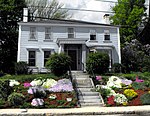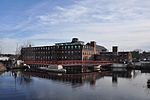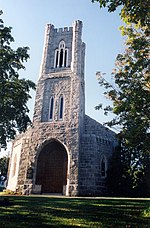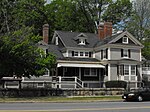G.B. Emmons House
Essex County, Massachusetts Registered Historic Place stubsHouses completed in 1890Houses in Methuen, MassachusettsHouses on the National Register of Historic Places in Essex County, MassachusettsNational Register of Historic Places in Methuen, Massachusetts ... and 1 more
Queen Anne architecture in Massachusetts

The G.B. Emmons House is a historic house at 283 Broadway in Methuen, Massachusetts. The two story Queen Anne house was built c. 1890 for G.B. Emmons, president of the Emmons Loom Harness Company located in neighboring Lawrence. Despite being a fairly typical example of a fashionable residential house constructed in Methuen and Lawrence at the time, the house is prominently situated on a major road close to the town's center and has been well preserved.The house was listed on the National Register of Historic Places in 1984.
Excerpt from the Wikipedia article G.B. Emmons House (License: CC BY-SA 3.0, Authors, Images).G.B. Emmons House
Broadway, Methuen
Geographical coordinates (GPS) Address Nearby Places Show on map
Geographical coordinates (GPS)
| Latitude | Longitude |
|---|---|
| N 42.728888888889 ° | E -71.188333333333 ° |
Address
Broadway 285
01841 Methuen
Massachusetts, United States
Open on Google Maps










